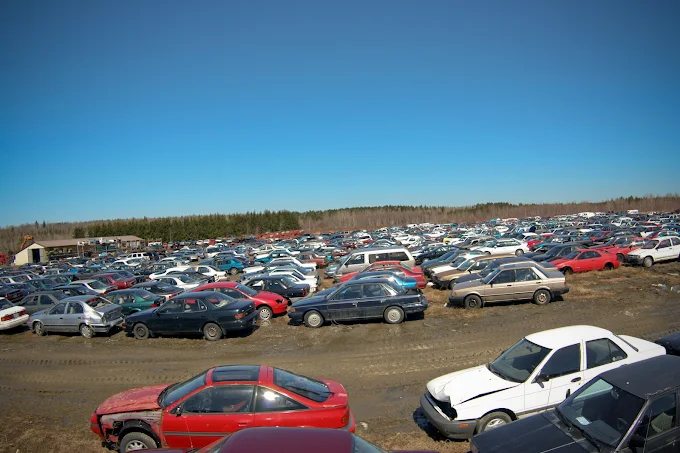Old cars don’t just take up space. They can become serious environmental hazards if left sitting in backyards, dumped illegally, or sent to landfill. Fortunately, car scrapyards offer a solution that’s both practical and sustainable. They help reduce waste, recover valuable materials, and protect natural resources in the process.
In Australia, car scrapyards play a vital role in the broader recycling industry. By responsibly managing vehicle disposal, they contribute to a cleaner environment and a more circular economy. In this article, we explore exactly how car scrapyards support the environment and why choosing the right scrapyard matters more than ever.
Why Car Disposal Is a Growing Concern
Each year, thousands of vehicles in Australia reach the end of their life. These include damaged cars from accidents, old models no longer roadworthy, or simply unwanted vehicles replaced by newer ones. If not handled properly, these cars can leak harmful fluids, pollute the soil, and add to the growing problem of landfill waste.
Modern vehicles contain plastics, rubber, fuel, oils, and heavy metals such as lead, mercury, and cadmium. Without proper disposal, these elements can contaminate water sources and harm wildlife and people alike. Car scrapyards help prevent this from happening by carefully managing each step of the vehicle’s breakdown and recycling process.
The Environmental Role of Car Scrapyards
Car scrapyards do far more than just crush old vehicles. Here’s how they support the environment on multiple levels:
1. Recycling Metal and Materials
Most of a car is made of steel, aluminium, and copper. These metals can be reused countless times without losing quality. Scrapyards extract and sort these materials before sending them to metal recycling plants. This reduces the demand for new mining, which is energy-intensive and often environmentally damaging.
Recycling car metals helps lower carbon emissions and cuts back on the water and energy used in metal production. It’s one of the most efficient ways to reuse resources that would otherwise go to waste.
2. Reducing Landfill Waste
Cars that are dumped in landfill take decades to break down. Along the way, they can release toxic substances into the surrounding environment. Scrapyards help avoid this by salvaging up to 85 to 90 per cent of a vehicle’s components through recycling or reuse.
By dismantling vehicles piece by piece, scrapyards ensure that most of the materials are either sold, repurposed, or melted down for new use. This drastically reduces the volume of waste sent to landfill.
3. Safe Removal of Harmful Fluids
Cars contain a range of fluids that are harmful to the environment, including:
- Engine oil
- Brake fluid
- Transmission fluid
- Coolant
- Petrol or diesel
- Air conditioning gas
Scrapyards are required to remove these fluids using proper drainage and containment methods. Once collected, the fluids are either reused, refined, or safely disposed of by licensed waste handling facilities. This protects local waterways and soil from contamination.
4. Reusing Car Parts
Many parts of a vehicle remain in good working condition even when the car itself is no longer roadworthy. Scrapyards recover these components and resell them as used auto parts. These include:
- Batteries
- Alternators
- Engines
- Radiators
- Doors and mirrors
- Tyres and wheels
This reduces the demand for newly manufactured parts, which take energy and raw materials to produce. It also helps car owners access affordable repair options and extend the lifespan of their current vehicles.
Reputable providers like top cash for cars Melbourne often support this process by collecting old cars directly and ensuring they end up in scrapyards that follow proper recycling practices.
5. Supporting the Circular Economy
A circular economy is one where products are reused, repaired, and recycled rather than being thrown away. Car scrapyards are a prime example of this in action. By keeping materials in use and reducing waste, they help move Australia closer to sustainable manufacturing and consumption.
Scrapyards also encourage responsible consumer behaviour. Instead of letting an old car rust away in the backyard, people are more likely to sell it for parts or scrap, knowing it will be processed in an eco-friendly way.
How the Process Works
Here’s a quick overview of how scrapyards typically process a vehicle:
- Vehicle Arrival
The car is brought in, often by the owner or through a car removal service. - Inspection and Registration
Details of the vehicle are recorded, and ownership is verified. - Fluid Drainage
Hazardous fluids are carefully drained and stored. - Parts Removal
Usable parts are tested, cleaned, and added to the resale inventory. - Metal Separation
The remaining body is crushed, shredded, and sorted by metal type. - Recycling
Metals are sent to smelters or recycling facilities to be reused.
Each of these steps follows strict environmental guidelines to ensure safety and sustainability.
Government Regulations and Standards
In Australia, scrapyards must operate under strict environmental and waste management rules. These regulations vary by state, but most require scrapyards to:
- Handle hazardous materials responsibly
- Prevent spills and pollution
- Recycle or reuse as much as possible
- Maintain safe working conditions
- Report waste and fluid volumes
The Environment Protection Authority (EPA) in each state ensures that scrapyards follow these rules and penalises those that do not comply. This ensures that the environmental benefits of car recycling are real and lasting.
The Role of Car Owners
While scrapyards play a large part in environmental protection, car owners also have a role to play. Choosing a licensed, reputable scrapyard is the first step toward responsible car disposal.
Here are a few things you can do:
- Use certified scrap and recycling services
Check for licences and environmental compliance before handing over your vehicle. - Ask about recycling practices
A good scrapyard will be open about what they recycle and how. - Get quotes from eco-conscious services
Some top cash for cars providers in cities like Melbourne promote their green practices and offer fair payment for unwanted vehicles. - Remove personal items and check the logbook
Before scrapping your car, remove all belongings and ensure the transfer is recorded.
Car scrapyards are more than just storage yards for damaged vehicles. They’re an essential part of the environmental solution, helping reduce landfill, recover useful materials, and limit pollution caused by old cars. With proper regulation and community awareness, scrapyards across Australia continue to support a cleaner, greener future.
If you’re thinking of selling your old car or arranging disposal, consider choosing a scrapyard that prioritises sustainability. Your choice can make a difference not only to your wallet but also to the planet.



